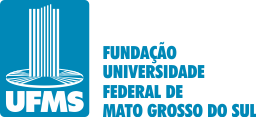Use este identificador para citar ou linkar para este item:
https://repositorio.ufms.br/handle/123456789/10165| Tipo: | Trabalho de Conclusão de Curso |
| Título: | ESTILO DE VIDA ATIVO ENTRE ESTUDANTES DE ENFERMAGEM: UMA ANÁLISE DA PRÁTICA DE ATIVIDADE FÍSICA |
| Autor(es): | BRENDA BORTOLATTO NASCIMENTO DIENY FERNANDA PEREIRA DE FREITAS |
| Primeiro orientador: | BEATRIZ MARIA JORGE |
| Resumo: | Introdução: A atividade física (AF) é a prática voluntária de exercícios que geram gasto energético, podendo ser leve, moderada ou vigorosa, dependendo do esforço físico e do impacto na respiração e nos batimentos cardíacos. Além de melhorar a saúde física, a AF traz benefícios à saúde mental, reduzindo o estresse, ansiedade e depressão. Estudantes universitários, especialmente de enfermagem, enfrentam altos níveis de estresse e pressão emocional durante a graduação, o que pode prejudicar sua saúde mental, agravada pela falta de prática de atividade física. Objetivo: Analisar a prática de atividade física entre os estudantes de enfermagem. Método: Estudo descritivo realizado com estudantes de Enfermagem da Universidade Federal de Mato Grosso do Sul, CPTL. A coleta de dados foi realizada no primeiro semestre de 2024. Após aceite e assinatura do TCLE, foi solicitado que respondessem dois instrumentos, de caracterização e o Questionário Internacional de Atividade Física (IPAQ) versão Curta. Resultados: Participaram 62 alunos, 22 (35,5%) do 1º semestre, 18 (29,0%) do 3º semestre e 22 (35,5%) do 5º semestre. A maioria do gênero feminino (90,3%), na faixa etária entre 18 e 20 anos. A análise dos participantes pela distribuição do tempo semanal de AF praticada, categorizada conforme a intensidade observou, 11 (17,7%) identificados como muito ativo, ativos A 2 (3,2%), ativos B 8 (12,9%) e ativos C 16 (25,8%) e ativo 26 (41,9%). Já 21 (33,9%) foram classificados como insuficiente ativo e 4 (6,5%) sedentários. Conclusão: A presente pesquisa revelou que as taxas de AF ineficazes ainda são altas considerando se tratar de um público que compreende os benefícios dessa prática. Todavia, nota-se que apenas saber os benefícios não significa que os estudantes irão praticá-las, isso porque as demandas acadêmicas, falta de tempo e motivação, ausência de apoio e dificuldade de locomoção favorecem essa prática com níveis ainda insatisfatórios. Assim, cabe às universidades estratégias e intervenções de nível educacional para o aumento da AF entre os alunos, visto que essas alterações do estilo de vida são influenciadas pela rotina acadêmica durante a formação profissional. |
| Abstract: | Introduction: Physical activity (PA) is the voluntary practice of exercises that generate energy expenditure. It can be light, moderate or vigorous, depending on the physical effort and the impact on breathing and heart rate. As well as improving physical health, PA has mental health benefits, reducing stress, anxiety and depression. University students, especially nursing students, face high levels of stress and emotional pressure during their undergraduate studies, which can damage their mental health, aggravated by a lack of physical activity. Objective: To analyze the practice of physical activity among nursing students. Method: A descriptive study carried out with nursing students at the Federal University of Mato Grosso do Sul, CPTL. Data was collected in the first semester of 2024. After accepting and signing the informed consent form, they were asked to complete two instruments: a characterization questionnaire and the International Physical Activity Questionnaire (IPAQ) Short version. Results: 62 students took part, 22 (35.5%) from the 1st semester, 18 (29.0%) from the 3rd semester and 22 (35.5%) from the 5th semester. The majority were female (90.3%), aged between 18 and 20. The analysis of the participants by the distribution of the weekly time of PA practiced, categorized according to intensity, showed that 11 (17.7%) were identified as very active, active A 2 (3.2%), active B 8 (12.9%) and active C 16 (25.8%) and active 26 (41.9%). On the other hand, 21 (33.9%) were classified as insufficiently active and 4 (6.5%) as sedentary. Conclusion: This study revealed that rates of ineffective PA are still high, considering that the public understands the benefits of this practice. However, it should be noted that just knowing the benefits does not mean that students will practice them, because academic demands, lack of time and motivation, lack of support and difficulty in getting around favor this practice with still unsatisfactory levels. It is therefore up to universities to develop educational strategies and interventions to increase PA among students, since these lifestyle changes are influenced by the academic routine during professional training. |
| Palavras-chave: | Atividade física estudantes de enfermagem bem-estar qualidade de vida. |
| País: | |
| Editor: | Fundação Universidade Federal de Mato Grosso do Sul |
| Sigla da Instituição: | UFMS |
| Tipo de acesso: | Acesso Aberto |
| URI: | https://repositorio.ufms.br/handle/123456789/10165 |
| Data do documento: | 2024 |
| Aparece nas coleções: | Enfermagem - Bacharelado (CPTL) |
Arquivos associados a este item:
| Arquivo | Tamanho | Formato | |
|---|---|---|---|
| 12604.pdf | 2,11 MB | Adobe PDF | Visualizar/Abrir |
Os itens no repositório estão protegidos por copyright, com todos os direitos reservados, salvo quando é indicado o contrário.

